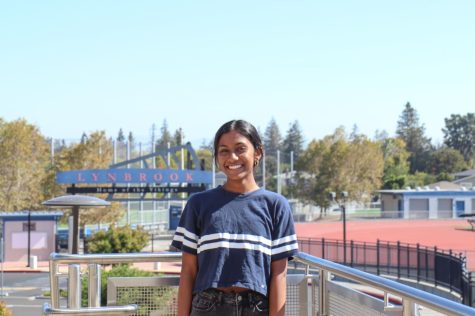Celebrating diversity and solidarity at the AAPI Cultural Festival
May 26, 2022
On May 14, beaming faces and elated spirits filled the Mountain View Civic Center Plaza in celebration of the Asian American and Pacific Islander Cultural Festival. Student and adult organizers from AAPI Silicon Valley, Asian American Parents Association and Bay Area Youth Initiative were inspired by Asian American Heritage Month to lead the event, collaborate with local Asian non-profits, coordinate live performances and assemble game booths. The event brought together a large gathering of people celebrating the diverse cultures of the AAPI community.
“The event was about bringing people together from all different types of backgrounds and highlighting the diversity in the AAPI community that is often neglected in the media,” said Audrey Fan, AAPI SV coordinator of the event’s booths and performances committee.
Students who took the lead in arranging the event included Lynbrook juniors Jason Shan and Khushi Nigam, who put their minds together to create a successful event with 12 booths, 11 performances and four guest speakers.
“Our goal was to create something long lasting and impactful, so we thought we could start this tradition of having the AAPI Cultural Festival each year in the spirit of Asian American heritage,” said Nigam, Vice-Chair of the AAPI SV Legislation Committee.
In 2021, AAPI SV arranged a protest in light of the hate crimes and racism against the AAPI community during the COVID-19 pandemic. The group wanted to continue this tradition of convening, leading to the birth of the AAPI Cultural Festival which brought people of all backgrounds together showing unity and cultural pride after years of mistreatment.
“We want everyone leaving to feel as if they’re not alone; that there’s a community they can reach out to for a support system, especially after these really hard times with COVID-19 and an increase in AAPI hate crimes,” Nigam said.
At the festival’s booths, local Asian organizations led interactive presentations and shared information about different and underrepresented groups within the AAPI community. Ranging from Indian heritage to Indonesian culture, the booths served its purpose of educating the public by engaging with attendees in live demos and hands-on games.
In addition to engaging booths of art, photos and games, live demonstrations by kung fu and martial arts students, musicians and dancers encouraged attendees to reminisce about the liveliness of their heritage.
“We wanted to get performers that represented all parts of AAPI,” Fan said. “For example, we got the Hawaiian dancers to represent the ‘Pacific Islanders’ part of the community as they are often left out.”
Musicians played instruments, such as Korean and Chinese drums, in unison and had synchronized movements, creating a beautiful routine. The dancers donned bright costumes, prancing across the stage, performing cartwheels and intricate moves to the amazement of the crowd.
“People should feel proud about their identity and know that there are so many other people part of it,” Fan said.
Spanning four hours, the multicultural festival was a grand success that brought the community together. The event’s organizers felt empowered that they were able to do their part to help imbue the community with thoughts of positive change and a renewed sense of identity and unity.




























































